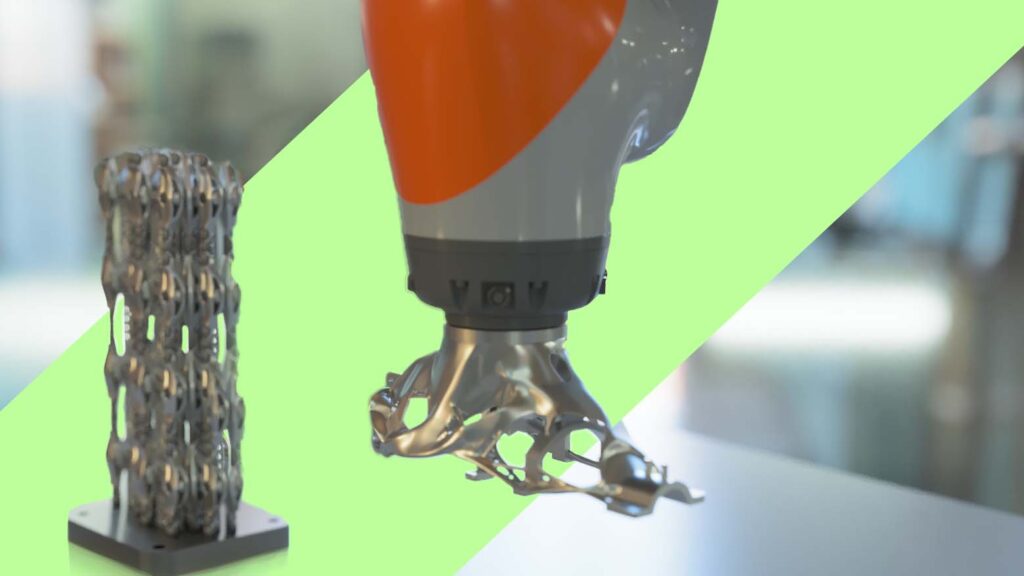Renishaw has announced its collaboration with UK start-up business Additive Automations on a project to automate metal additive manufacturing post-processing.
By using cobots to perform support removal, Renishaw predicts that the project could reduce the average cost per part by 25 per cent, furthering it’s potential as a cost-effective option for large volume production.
The project, named Separation of Additive-Layer Supports by Automation (SALSA), aims to use robotics and deep learning to digitise some of the few remaining manual processes left in AM.
“Cobots were chosen for their high payload-to-size ratio and integrated force sensors, which collect data to determine the geometry of AM parts,” said a spokesperson, explaining the SALSA process.
“Software then analyses the data, using digital twin technology. The output is then used to determine where the support structures are so that they can be removed using an end-effector tool.”
Sheffield-based Additive Automations has received funding from UK and Canadian bodies, with its CEO, Robert Bush, collaborating with both Renishaw and the University of Sheffield Advanced Manufacturing Research Centre (AMRC).
Renishaw provided four examples of 3D printed part builds so the start-up could demonstrate its support structure removal system.
The four AM parts were designed for medical, oil and gas, automotive and mechanical engineering applications. By testing its robotic system on parts already being used in industrial applications it is hoped this will help Additive Automations demonstrate the potential of its product.
“Automating support removal and finishing in AM completely changes the economics when scaling up AM, and for the first time makes it feasible for manufacturers around the world to adopt this technology in rapid production,” explained Bush.
“The digitalisation of AM also comes with an increase in quality, traceability and repeatability. Given that on average almost two thirds of post-processing costs are from finishing and support structure removal, we believe automation can reduce costs by an average of 25 per cent per part.”






